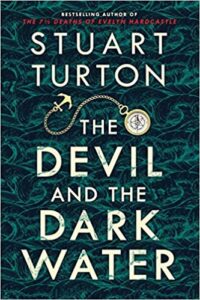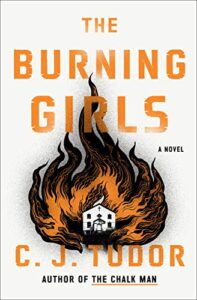Ghost Wood Song by Erica Waters
HarperTeen, 2020
ISBN-13 : 978-0062894229
Available: Hardcover, Kindle edition, audiobook ( Bookshop.org | Amazon.com )
Shady Grove grew up in a haunted house, and her father owned a violin that could raise ghosts, but it disappeared when he died in a car accident when she was twelve. Like him, Shady is a talented bluegrass fiddle player, but she’s never gotten over her father’s death, and is obsessed with the violin.
After her father’s death, Shady’s mother remarried to his best friend, Jim. Shady, her troublemaking older brother Jesse, her toddler half-sister Honey, her mother, and Jim live in a trailer on the edge of town. Jim is an alcoholic with an anger management problem, and he and Jesse are always clashing.
Shady and her friends Orlando and Sarah enter a music competition at a local cafe. They discover Jim’s son Kenneth is also participating, as are his friend Cedar and Cedar’s sister Rose. Shady is impressed by Cedar and Rose’s playing (and a little by Cedar himself) but is unsure about asking to play with them out of loyalty to Sarah and Orlando. Jim and his older and more respectable brother Frank show up as well. Kenneth gets into an altercation with Jesse that ends with Kenneth in the emergency room. Jim and Jesse end up in a fight, Jesse storms out, and the next morning Jim is found dead, killed with a hammer. The logical conclusion is that Jesse did it in a fit of anger, but Shady refuses to believe that Jesse could be responsible and decides the only way to find out for sure is to find her father’s violin and raise Jim’s ghost for the true story. But there is a dark and terrifying price to pay for playing the violin.
Set in small-town Florida, Erica Waters tells this Southern Gothic tale of grief, guilt, shame, anger, and family secrets, with gorgeous prose. Her poetic language flows through wild areas, jolting both characters and readers with electrical shocks from emotional events. Hauntings unsettle, and Shady’s violin pulls her deep into shadows that may lead to her destruction… or to discover what her family has been hiding all these years. Waters describes the setting in such a way that I could see stepping right in to the forest or climbing into the attic of Shady’s former house.
In addition to the ghosts, the mystery of Jim’s death, and the secrets of the house she grew up in, Shady has to navigate relationships. She has deep feelings for her best friend Sarah, but is getting mixed signals. She’s also attracted to Cedar, who loves the same music, and is waiting for Shady to figure out how she really feels. Sarah and Rose are both lesbians, but with very different personalities, and it’s nice to see varied representation there. While it’s more common to see gay and lesbian protagonists in YA fiction, bi protagonists (and characters) are less frequently seen. With bi erasure a problem in society as well as fiction, I was glad to see bisexual representation.
Ghost Wood Song is a beautifully, darkly told story filled with moments of terror and deep feelings of love, grief, obsession, and fear, most certainly worth its place on the Stoker ballot and an excellent contender for the award.
Contains: attempted suicide, violence, murder
Reviewed by Kirsten Kowalewski
Editor’s note: Ghost Wood Song is a nominee on the final ballot for this year’s Bram Stoker Awards in the category of Superior Achievement in a Young Adult Novel.







Follow Us!